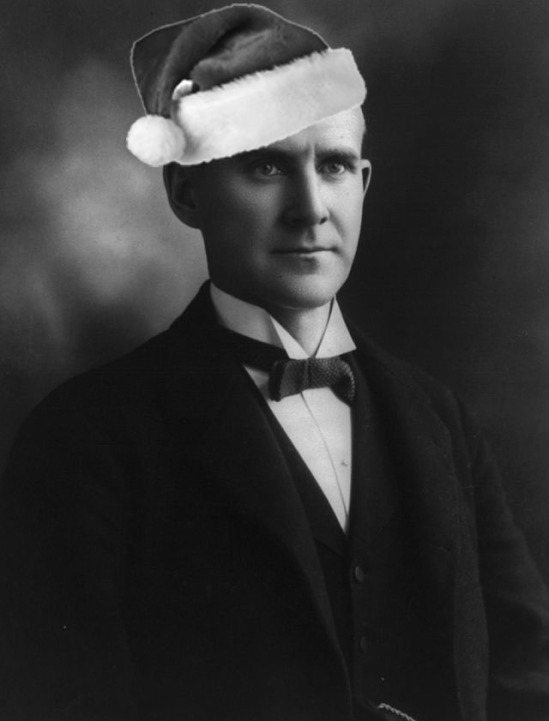So Happy Labor Day, everyone — at least for those living in the USA. Where else could you get a holiday dedicated to the labor movement that helped reshape workers’ lives?

“You’d better watch out. You’d better not cry. You’d better not take advantage of workers. I’m telling you why: Eugene V. Debbs is protesting your labor practices.” Quite catchy, no?
So I’m sure you can all guess why I’ve decided today to finally talk about my smithing god Cador, the Flame of Genius, who was first teased solely with his holy symbol and, later, through his month of the calendar year.
So far, you should know that he is a patron god of smiths and creativity.
And deities of intelligence being associated with fire goes back a long way, and none embody this connection for than good ol’ Prometheus.
And fire being associated with creativity isn’t far off either. Even Hephaestus, the greek god of the forge, may have specialized in making weapons, but his craftiness knew no bounds from making a contraption that dropped a net over Aphrodite, his wife, and Ares while the two were screwing around, literally, in bed. He even made frikkin’ robots. One of the most famous ones was Talos.
But Cador is not a the kind of deity associated with trickery like Prometheus can be and he is not just a machinist like Hephaestus.
Many scholars believe that Cador began simply as a forge god in the northern reaches of Kalanesia, where all families had at least one member who could function in the basic smithing arts. His small church taught patience and dedication to a craft as ways to a good life.
However, as his influence moved to areas where blacksmithing was more a guild-focused craft, his portfolio expanded to art, invention and creativity.
But the church holds that the switch occurred thanks to one individual: Hyram Gardener. Legend say that his young blacksmith’s apprentice disliked making the usual implements requested at his master’s forge: nails, axes, etc. Instead, he was fascinated with mixing metals, a practice the master decried at every turn.
One day, dwarven miners came into the town and asked Hyram’s master to forge them a mattock out of a small chunk of adamantine they had. The master told them that there was not enough metal to make a mattock head big enough for their mining. Against the master’s wishes, Hyram agreed when the dwarves asked him to try after he suggested mixing it with other metals.
Hyram went to the forge and immediate began looking to see what metals he had available to work with. He ruled out iron and copper, knowing there had too many impurities and would only weaken the final product. Instead, he took a small dagger made from steel that his grandfather bought him before leaving for his apprenticeship and melted that into the adamantine.
However, this was still not enough. So, in desperation, he took ten gold coins he had saved up during his apprenticeship and added them to the molten metals, and it was still not enough.
He continued to fret, but as he sat in silence, he thought the heard whispers coming from the forge.
“Silver. Silver. Silver.”
Think he had gone made, but afraid to let his master be proven right, he then took his only bit of silver, a locket that had belonged to his mother before she died in childbirth, delivering him. These metals he mixed together and forged into the mattock head.
He didn’t tell the dwarves what all he had put in the new tool, but they paid him enough to cover the costs he incurred from the materials with an additional seven gold coins. The master berated him for taking the money over the sentimental items, but, a few months later, the dwarves returned in greater numbers.
They all clamored for the apprentice who forged the mattock head, claiming it had not worn down while working in the mines like even their own pure adamantine tools did after repeated chipping at adamatine ore deposits.
Thus did Hyram Gardener create orichalkos (similar to the real-world’s orichalcum), the strongest metal known in Kalanesia.
When asked how he developed the metal, Hyram simply said he heard the whispers of Cador beckoning him to use what he had to create something new.
This, priests of the forge god say, led to the expansion of Cador’s portfolio from just blacksmithing to invention and forging ahead into progress rather than just staying with traditional methods.